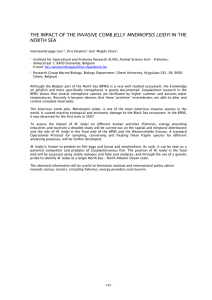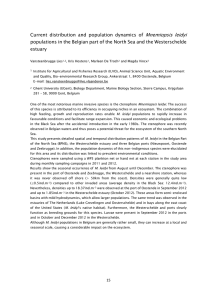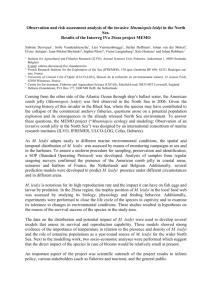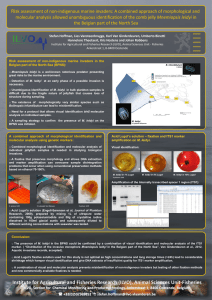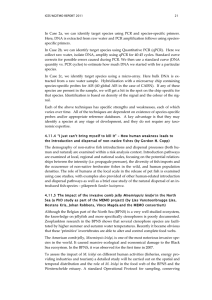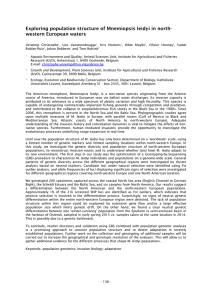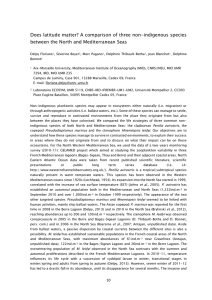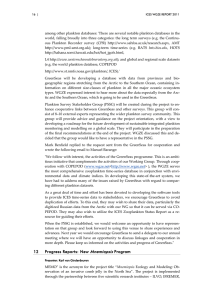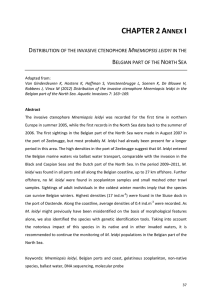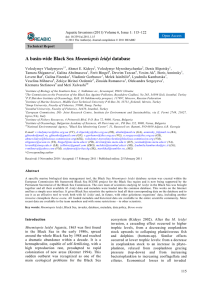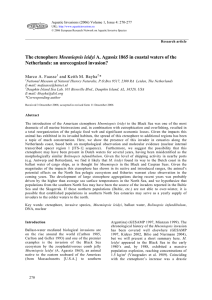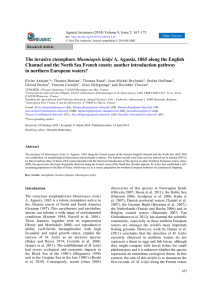Risk assessment of non-indigenous marine ... approach of morphological and molecular ...
advertisement
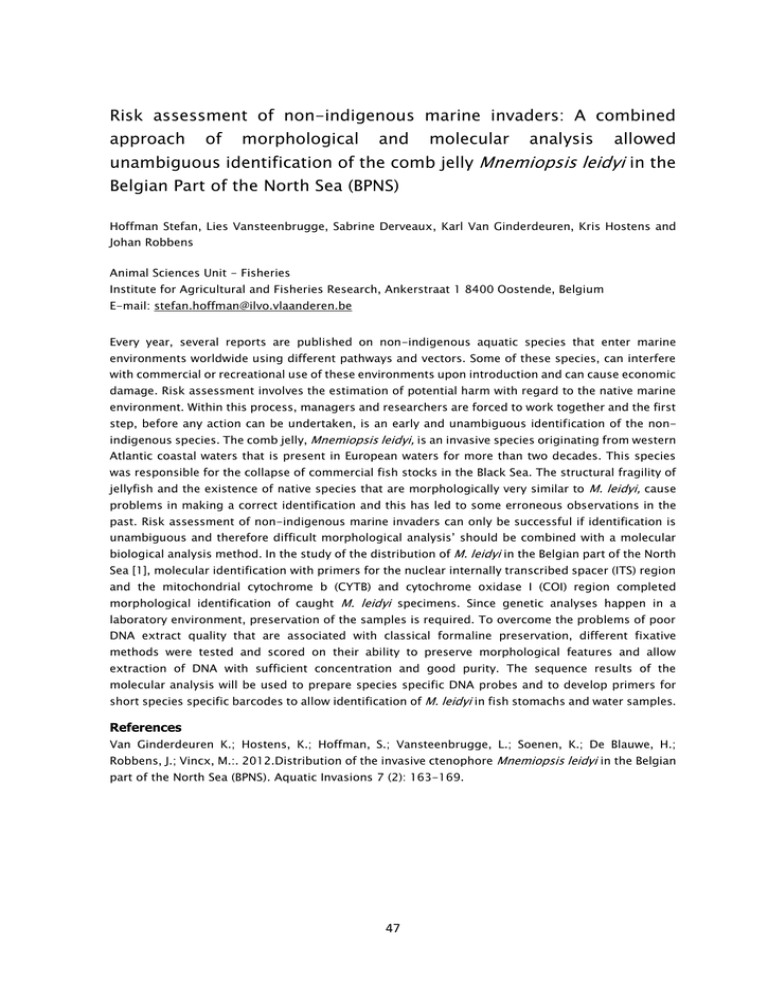
Risk assessment of non-indigenous marine invaders: A combined approach of morphological and molecular analysis allowed unambiguous identification of the comb jelly Mnemiopsis leidyi in the Belgian Part of the North Sea (BPNS) Hoffman Stefan, Lies Vansteenbrugge, Sabrine Derveaux, Karl Van Ginderdeuren, Kris Hostens and Johan Robbens Animal Sciences Unit - Fisheries Institute for Agricultural and Fisheries Research, Ankerstraat 1 8400 Oostende, Belgium E-mail: stefan.hoffman@ilvo.vlaanderen.be Every year, several reports are published on non-indigenous aquatic species that enter marine environments worldwide using different pathways and vectors. Some of these species, can interfere with commercial or recreational use of these environments upon introduction and can cause economic damage. Risk assessment involves the estimation of potential harm with regard to the native marine environment. Within this process, managers and researchers are forced to work together and the first step, before any action can be undertaken, is an early and unambiguous identification of the nonindigenous species. The comb jelly, Mnemiopsis leidyi, is an invasive species originating from western Atlantic coastal waters that is present in European waters for more than two decades. This species was responsible for the collapse of commercial fish stocks in the Black Sea. The structural fragility of jellyfish and the existence of native species that are morphologically very similar to M. leidyi, cause problems in making a correct identification and this has led to some erroneous observations in the past. Risk assessment of non-indigenous marine invaders can only be successful if identification is unambiguous and therefore difficult morphological analysis’ should be combined with a molecular biological analysis method. In the study of the distribution of M. leidyi in the Belgian part of the North Sea [1], molecular identification with primers for the nuclear internally transcribed spacer (ITS) region and the mitochondrial cytochrome b (CYTB) and cytochrome oxidase I (COI) region completed morphological identification of caught M. leidyi specimens. Since genetic analyses happen in a laboratory environment, preservation of the samples is required. To overcome the problems of poor DNA extract quality that are associated with classical formaline preservation, different fixative methods were tested and scored on their ability to preserve morphological features and allow extraction of DNA with sufficient concentration and good purity. The sequence results of the molecular analysis will be used to prepare species specific DNA probes and to develop primers for short species specific barcodes to allow identification of M. leidyi in fish stomachs and water samples. References Van Ginderdeuren K.; Hostens, K.; Hoffman, S.; Vansteenbrugge, L.; Soenen, K.; De Blauwe, H.; Robbens, J.; Vincx, M.:. 2012.Distribution of the invasive ctenophore Mnemiopsis leidyi in the Belgian part of the North Sea (BPNS). Aquatic Invasions 7 (2): 163-169. 47
